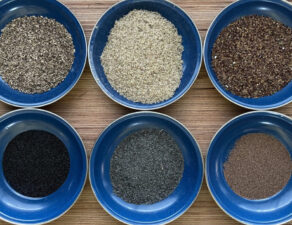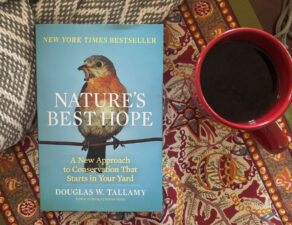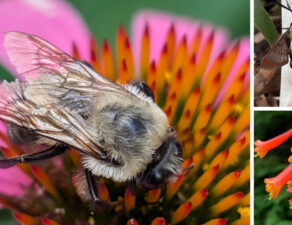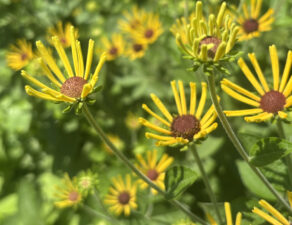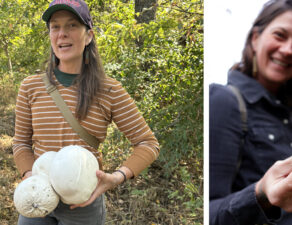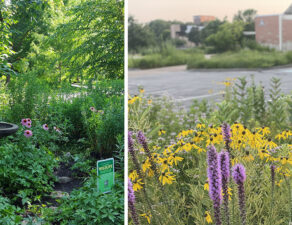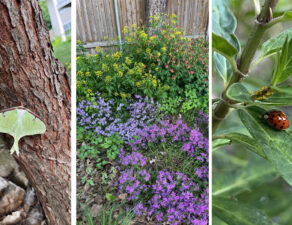
By Chris Cardwell
Photo Credit: Missouri Department of Conservation
We know all about the benefits of our native landscapes for pollinators, but even more exciting are the benefits that those partners can provide to you, in service to your veggie gardens! In theory it’s as simple as “the more the merrier,” knowing that abundant garden visitors will naturally be drawn to pollinate plants of all types, but being deliberate about what native species you plant can support your food production gardens. Drawing in specialized pollinators that visit unique families of vegetables can increase crop productivity.
Bees, specifically, are drawn to particular flower shapes and colors. So native flowers that resemble vegetable flowers get bonus points for attracting specialists. Tomatoes are often visited by sweat, miner, and bumble bees who are also fond of Germanders, Tall Coreopsis, and Pale Purple Coneflower. Two of them also visit blueberries in bloom with another genus, Habropoda, which bear the telling common name of Southeastern blueberry bees. This genus also nectars frequently on Amsonias, or Blue Stars. Okra happens to be in the Mallow family, so a rain garden or moist area of your yard is a great place to add our native Hibiscus, Rose or Swamp Mallows. Then there’s the eponymous squash bee, which supports all members of the Cucurbit family and has a taste for Lead Plant and Common and Butterfly Milkweeds. Some native species have so many companions that no matter what’s in your garden, they’re great choices to add – Penstemons, Baptisia, Monarda, and New Jersey Tea are all so vibrant with diverse bee life that they’re sure to boost yields anywhere they’re found.
It’s not just the insects’ work on the vegetable flowers that counts – many natives invite predatory bugs who can bolster your defenses and play a pivotal role in pest management. Dreaded squash bugs ruining your Pumpkin patch year after year? Draw in more tachinid flies, who will parasitize both squash and harlequin beetles, with straight-species Yarrow, Wild Quinine, Boneset, and Mountain Mints. And let’s not forget about our native wasps, who prey on pesky beetle and caterpillar larvae, among other pests. Exciting and popular native plants like Rattlesnake Master, Purple Prairie Clover, and Black-eyed Susans will encourage thynnid, scoliid, and potter wasps, while early and late season blooms from Golden Alexanders and Goldenrods will help sustain healthy populations of these beneficial insects year after year.
For more detailed information about these deeply interwoven plant and insect relationships, check out Heather Holm’s award-winning titles, Pollinators of Native Plants (2014),Bees (2017), or Wasps (2021) Heather’s presentation on the topic of creating landscapes for native bees was incredibly insightful at our Plan it Native conference in February, and her insights just may have you harvesting more fresh produce from your garden this summer.
